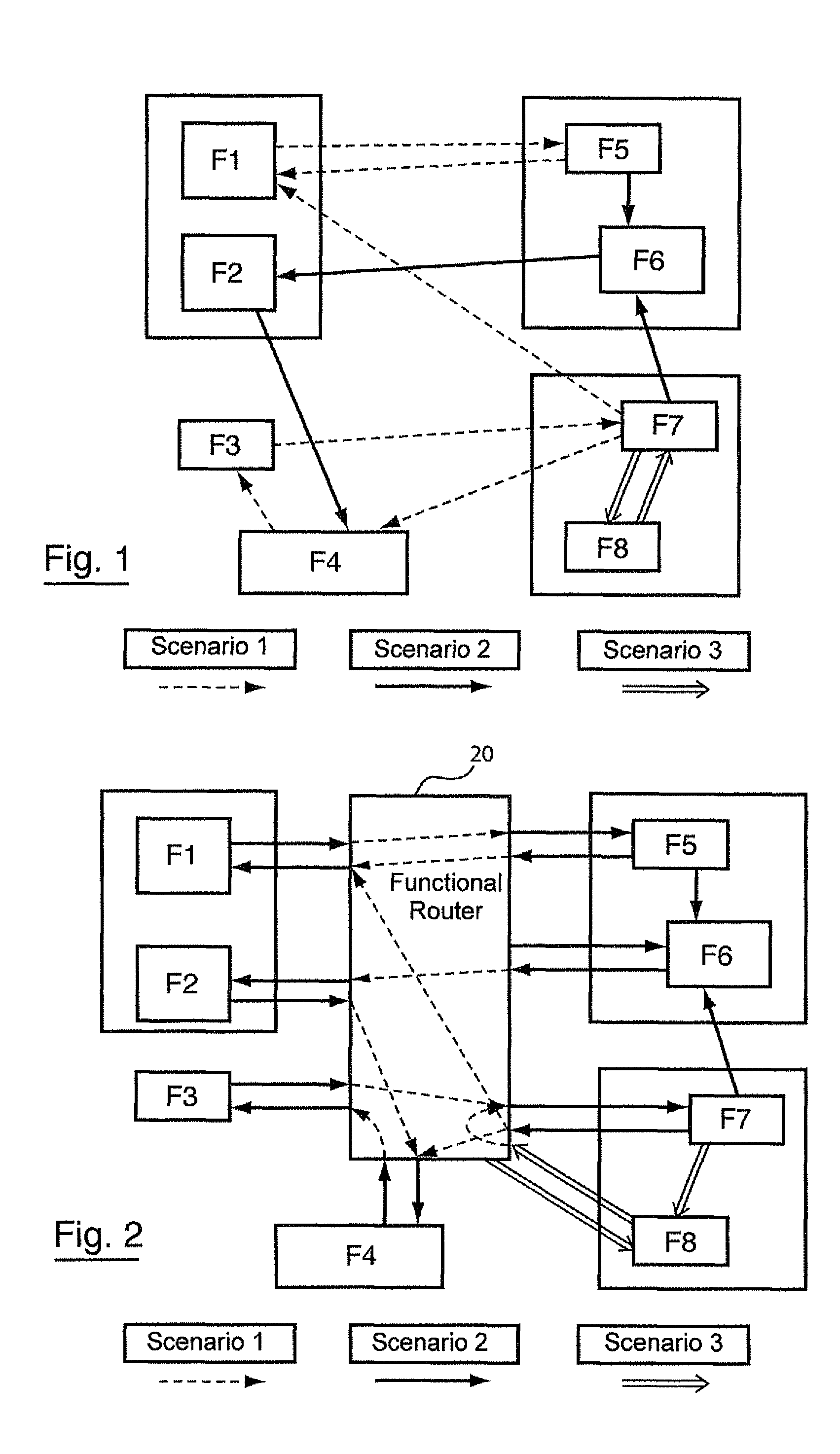Method for simulating a complex system with construction of at least one model including at least one modelled router, corresponding computer software package and storage means
a technology of complex systems and routers, applied in the field of complex systems, can solve the problems of insufficient functional modelling to decide upon production solutions, the inability to obtain architectural models capable of enabling analyses and evaluations, and the inability to model complex systems. , to achieve the effect of enabling analysis and evaluation, a new degree of complexity also appears with configurable and even dynamically reconfigurable products
- Summary
- Abstract
- Description
- Claims
- Application Information
AI Technical Summary
Benefits of technology
Problems solved by technology
Method used
Image
Examples
application example
2. Application Example
[0078]The modelled router technique of the disclosure applies in particular, but not exclusively, to the study of the architectures of complex electronic systems, whether it involves cards or systems integrated into a chip (SoC—System-on-Chip). These systems systematically integrate hardware and software as execution resources for services.
[0079]The study of such systems passes first through their functional and then architectural modelling. These models serve to provide checks and analyses of both functional and performance-related properties. The properties are obtained by simulation of the models. For more information, refer to the MCSE methodology (Design Method for Electronic Systems) and to the CoFluent Studio (registered trademark) tools of the CoFluent Design company (applicant of this patent application), which implement a portion of this MCSE methodology.
[0080]The modelled router technique of the disclosure most especially claims to be suited to new t...
PUM
 Login to View More
Login to View More Abstract
Description
Claims
Application Information
 Login to View More
Login to View More - R&D
- Intellectual Property
- Life Sciences
- Materials
- Tech Scout
- Unparalleled Data Quality
- Higher Quality Content
- 60% Fewer Hallucinations
Browse by: Latest US Patents, China's latest patents, Technical Efficacy Thesaurus, Application Domain, Technology Topic, Popular Technical Reports.
© 2025 PatSnap. All rights reserved.Legal|Privacy policy|Modern Slavery Act Transparency Statement|Sitemap|About US| Contact US: help@patsnap.com



